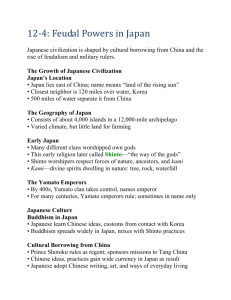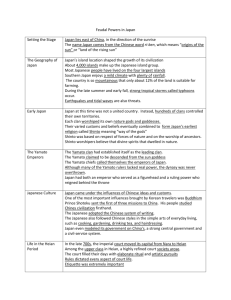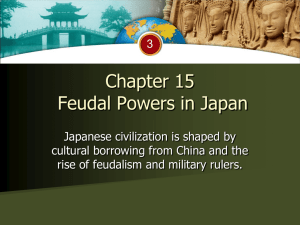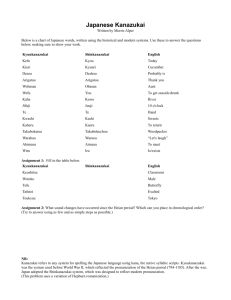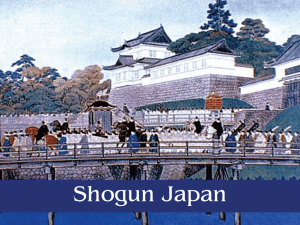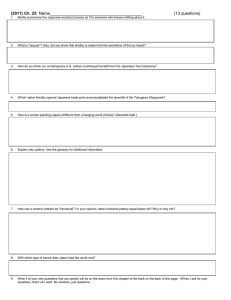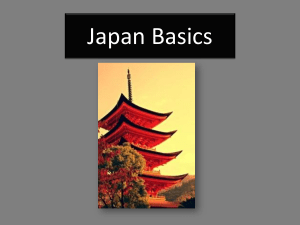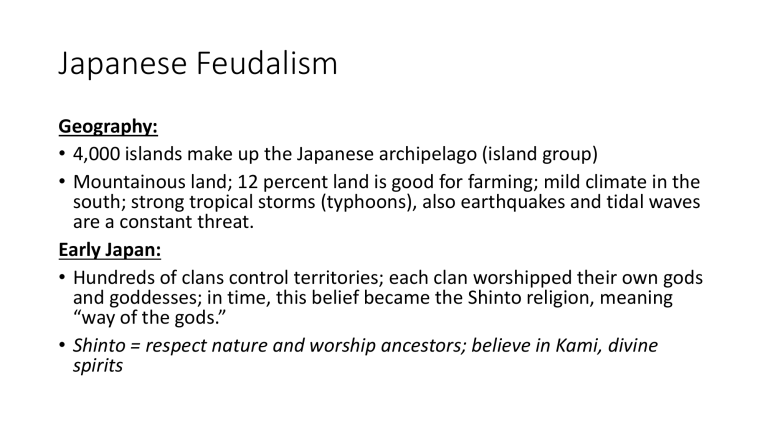
Japanese Feudalism Geography: • 4,000 islands make up the Japanese archipelago (island group) • Mountainous land; 12 percent land is good for farming; mild climate in the south; strong tropical storms (typhoons), also earthquakes and tidal waves are a constant threat. Early Japan: • Hundreds of clans control territories; each clan worshipped their own gods and goddesses; in time, this belief became the Shinto religion, meaning “way of the gods.” • Shinto = respect nature and worship ancestors; believe in Kami, divine spirits Japanese Feudalism • Yamato Emperors - 7th century, Yamato chiefs called themselves emperors of Japan. However, they lacked real power, they were more figureheads. The ruling party, pulled the real strings. • Japanese Culture – Korean travelers brought Buddhism (from China). (The Korean travelers also brought Chinese culture.) 700s the imperial court accepted the religion in Japan. 8th and 9th century these ideas spread. Buddhist rituals and Shinto beliefs at merged. • China – Prince Shotoku (Regent for his aunt) cultivated his interest in (Tang) Chinese culture in Japan. Japanese adopted Chinese system of writing. Artists painted in the Chinese style. The Japanese copied approaches to everyday life. They even modeled their government on China’s. (They tried to introduce the civil-service system, but it failed.) • Heian Period – 700s, imperial court moved to Heian (modern day, Kyoto). Here was a highly refined court society. Elaborate rituals and artistic pursuits filled their day. Etiquette was key. Fujiwara family was in control. End of Imperial Authority • The landowners and clan chiefs challenged central government. With the decline of the Fujiwara family, came a lawlessness and landowners needed protection. (small landowners traded land to stronger warlords for help). Beginning of the feudal system = modeled like medieval Europe. • Samurai Warriors: loyal warriors “ one who serves” protecting a lord (Daimyo) . Lives by the Bushido code: reckless courage, reverence for the gods, fairness, generosity and an honorable death was more important than life. Honor. Bravery. Loyalty. • Kamkura Shogunate: 1192, the emperor named Yoritomo was given the title of Shogun, “supreme general of the emperor’s army.” (military dictator) 1200’s was known as the period of the Shogunate. This reign, with a figurehead emperor, lasted until 1868. Shoguns lost power during the Mongol invasions. Samurais became more attached to their local lords than the emperor.
